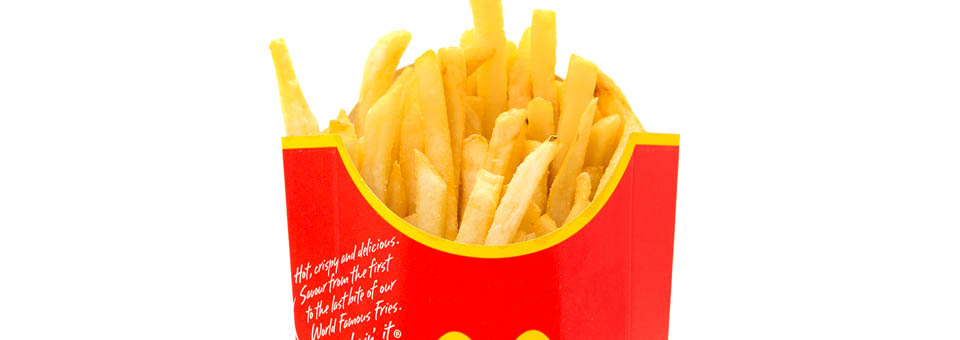A Japanese research team is hot on the trail of a baldness cure.
In a breakthrough study, they found that an ingredient used to make McDonald’s French fries can help stimulate hair growth.
Specifically, it activated a germ that triggers dormant hair follicles to start growing hair again.1
Now, I would never recommend that you run out and order fried potatoes from a fast food restaurant. And you wouldn’t cure your baldness even if you did…
But when you rub this ingredient on your skin, it activates hair follicle germs (HFGs) — the cells that help grow hair follicles.
It’s called dimethicone. And I was so impressed by the research that I started using this compound in my clinic.
You see, I’m always looking for ways to help my patients regrow their thinning hair naturally.
But here’s what really had me intrigued…
HFGs are mesenchymal stem cells that exist right below the surface of the scalp. And this kind of research attacks the root cause of baldness. Unlike Big Pharma medications like Rogaine.
I’ve always told my patients to avoid products like this.
The minoxidil in Rogaine can cause a build-up of excess fluid between the heart and the sac surrounding the heart. It can also bring on stabbing chest pain, trouble breathing, numbness, confusion and more.
I always tell my patients that the only way to revive your hair is to start at the roots. Your hair follicles are alive and well. And they control how full and vibrant your hair is.
Part of the solution is making sure blood circulation to the hair follicles is supported by key activators.

To keep my own hair healthy, I stay away from chemical products and use ingredients that nature provides.
And if your circulation is working right, you can supply your
hair follicles with the nutrients they need. The correct nutrients make our hair more elastic and less prone to breakage.At my clinic I’ve been using PRP stem cell therapy for years to help my patients regrow hair naturally.
PRP uses platelets and growth factors to heal every part of your body. I use it to help my patients heal from surgery, relieve back and joint pain and revive old, tired skin.
Your biggest supply of stem cells is stored in your body’s own fat tissue. This stash of stem cells sits just below your skin in your abdomen, thigh or buttocks.
For hair regrowth, I harvest these stem cells from your fat. In a centrifuge, we separate the stem cells from the fat tissue. I take this rich supply of stem cells and use it in the PRP process.
Right away, the stem cells start waking up hair follicles. They start regenerating. Soon they’re producing healthy, strong hair.
If you’d like to learn more about stem cell PRP for hair loss, please call 561-784-7852. My staff at the Sears Institute for Anti-Aging Medicine will be happy to answer all your questions.
But if you are not in South Florida or cannot make it to my clinic, I’m happy to share with you three tips to maximize your mane right at home.
Regenerate a Lustrous Full Head of Hair
- First, nourish your hair follicles and scalp with vitamin B-3. Also known as niacinamide, this vitamin restores levels of nicotinamide adenine dinucleotide (NAD+) and feeds your hair follicle stem cells to grow new hair.
Look for serums that contain niacinamide to apply directly to your scalp. Make sure any product you buy has at least 5% niacinamide. You should see results in four to six weeks. - Second, use fenugreek and black cumin seed oil to keep your follicles active. The seeds and leaves of the fenugreek plant contain a form of niacin (vitamin B3) called nicotinic acid.
Niacin is a vasodilator. It increases blood flow to the capillaries that feed your hair root. In one study of a serious balding condition called alopecia, women were given either niacin or a placebo. After six months of applying it topically, the niacin group had a significant increase in the fullness of their hair.2
The oil from black cumin seed (nigella sativa) is rich in beta-sitosterol. In one study, a group of people were treated with black cumin seed oil for three months. Results showed 90% of the black seed group had increased hair thickness compared to only 7% in a placebo group.3 - If you still need more help, consider saw palmetto. Saw palmetto is also rich in beta-sitosterol. It inhibits the formation of DHT, the hormone responsible for male pattern baldness.
A study in the Journal of Alternative and Complementary Medicine looked at people between the ages of 23 and 64 with hair loss. They received either beta-sitosterol or a placebo. A whopping 60% of the people receiving beta-sitosterol had improved hair growth. They also lost less hair than the placebo group.4
For hair growth, I recommend getting at least 300 mg of beta-sitosterol every day. That means you’ll probably want to supplement. Look for products made with saw palmetto.
To Your Good Health,

Al Sears, MD, CNS
References
1. Kageyama T, et al. “Spontaneous hair follicle germ (HFG) formation in vitro, enabling the large-scale production of HFGs for regenerative medicine.” Biomaterials. 2018;154:291-300.
2. Draelos ZD, et al. “A pilot study evaluating the efficacy of topically applied niacin derivatives for treatment of female pattern alopecia.” J Cosmet Dermatol. 2005;4(4):258-261.
3. Sudhir P, et al. “Nigella sativa seed, a novel beauty care ingredient: A review.” Int J Pham Sci Res. 2016;3:3185-3196.
4. Prager N, et al. “A randomized, double-blind, placebo-controlled trial to determine the effectiveness of botanically derived inhibitors of 5-alpha-reductase in the treatment of androgenetic alopecia.” J Altern Complement Med. 2002;8(2): 143-152.

